We'll be running a series of Nature Conversation events across Westmorland and Furness throughout March.
To help shape and inform our Nature and Biodiversity Action Plan, our Cabinet Member for Climate and Biodiversity, Councillor Giles Archibald, will be hosting five nature conversations including Barrow, Kendal, Penrith, Ulverston as well as an online option.
These events are open to everyone and will be an opportunity for you to hear from us about the importance of nature and biodiversity and our response to the biodiversity emergency. The feedback from these sessions will also help to inform Cumbria’s Local Nature Recovery Strategy (LNRS) – you can read more about the LNRS later in this newsletter.
More importantly, they are an opportunity for you to let us know what you are doing to support nature recovery and biodiversity, share your views on future actions and any barriers or challenges to nature recovery as well as ask any questions you may have.
The events will be held as follows:
-
Ulverston – as part of an ‘Eco Fair’ at The Coronation Hall, we will be holding a stall on Thursday 7 March, 10.30am - 4.30pm.
-
Penrith Town Hall – Monday 11 March, 5.30 - 7.00pm
-
Barrow, The Forum – Thursday 14 March, 5.30 - 7.00pm
-
Online event – Thursday 21 March, 5.30 - 6.30pm
We will also be holding at a stall as part of the ‘Natural Kendal’ event at Kendal Museum on Saturday 18 May, 10.00am - 4.00pm.
No bookings are required for the events in Ulverston and Kendal.
However, if you would like to attend the events in Penrith, Barrow or online, you can book through the below links:
Climate change remains the challenge of our generation and we are making it a high priority.
The Council's Climate Action Plan Part Two and Carbon Management Strategy documents laid on a wood table.
In January, at a meeting of Cabinet, members agreed a new Carbon Management Strategy for 2024-2029 as well as the second and final part of the council’s ambitious new climate action plan.
These plans outline the direction and intention of the council to address climate change, provide leadership in the drive to become net zero, and create a greener, healthier, more resilient Westmorland and Furness.
The Carbon Management Strategy sets out the total greenhouse gas (GHG) emissions of the council’s operations and the services it delivers. The total emissions reported by the council is 84,551 tonnes of carbon dioxide equivalent (tCO2e), with buildings, transport, and supply chain making up the main sources of emissions.
This work is complemented by Part Two of the council’s Climate Action Plan which identifies suitable actions we can take across the organisation to reduce emissions, reduce environmental inequalities and create a climate positive council culture, building on our ‘ecologically aware’ value.
This includes how we can work with others to make changes and collaborate with partners such as Cumbria Action for Sustainability (CAfS), the Zero Carbon Cumbria Partnership (ZCCP) and town and parish councils to deliver net zero across Westmorland and Furness.
The Climate Action Plan is a five-year plan which will be reviewed regularly and updated annually, with the council focusing its actions on six categories, identifying that a holistic approach is needed to tackle climate change and achieve net zero:
- The way we live
- The way we work
- The way we produce energy
- The way we protect and enhance nature
- The way we use things
- The way we travel
Read more about the plans.
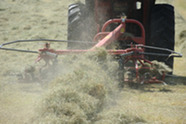
A Land and Nature Skills Service for Cumbria has been announced involving local leaders in education, business, farming and wildlife conservation.
The new free service has been designed in collaboration with over fifty organisations including Westmorland and Furness Council, University of Cumbria, Chamber of Commerce, Cumbria Wildlife Trust and more.
The goal is to improve access to learning and training for farming, forestry and environmental jobs in the county. The Service will also support existing businesses enhance skills to adapt to changing demands. The challenges and opportunities for our County include securing sustainable food production, adapting to the changing climate and nature recovery.
The Service has been funded by the Esmée Fairbairn Foundation, Defra's Farming in Protected Landscapes Programme and others including the Department for Education, Westmorland and Furness Council's Climate and Nature Partnership Fund, and Cumbria Local Enterprise Partnership.
Image shows: a small tractor-driven hay rake producing a windrow in a field.
|
Westmorland and Furness Council were appointed in Summer 2023 to act as the Responsible Authority to produce The Cumbria Local Nature Recovery Strategy (LNRS).
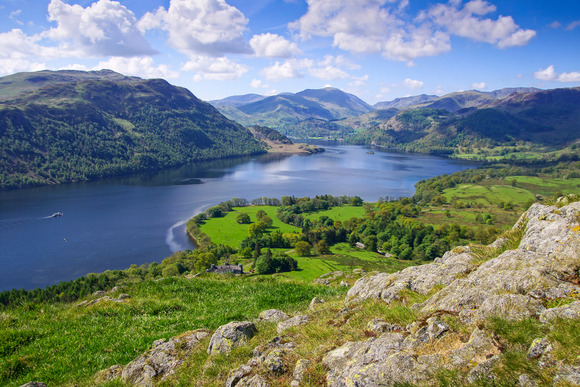 A landscape photo looking down from the fells to Ullswater with the lake and mountains in the distance.
What is the Local Nature Recovery Strategy (LNRS)?
The LNRS is a plan to restore the county's wildlife and habitats. It's required by law and aims to connect conservation efforts, research, and funding to create a Nature Recovery Network.
Why is it important?
Cumbria boasts diverse wildlife, but it's declining. The LNRS wants to protect species and habitats, restore ecosystems like woodlands and peatlands, and make the landscape more abundant, attracting visitors and benefiting communities.
What will it look like?
The LNRS will be a written document with priorities for habitat and species recovery, along with actions to achieve them. An interactive map will show important biodiversity areas and potential restoration sites.
What's the progress?
The plan is being developed collaboratively and is expected to be published in early 2025. We’ve began the process to identify key species, mapped important areas, and are exploring links between nature and other aspects like health and economy.
How can you get involved?
Share your ideas and get involved! Email Cumbria.LNRS@westmorlandandfurness.gov.uk or visit cumbrialnrs.org.uk to learn more.
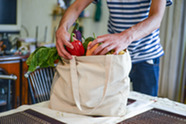
This month sees Food Waste Action Week, a national campaign run by Love Food Hate Waste to highlight the implications of food waste on our planet.
This year the campaign encourages people to ‘Choose What You’ll Use’, highlighting the benefits of buying loose fruit and vegetables and inspiring people to do this wherever they can.
|
Did you know?
Every day in UK homes, we throw away 2.9 million potatoes, 1 million bananas and 2.1 million carrots!
And 35% of all edible food binned in UK homes is fresh fruit, vegetables and salad.
Buying loose reduces food waste and WRAP research has shown that if all apples, bananas and potatoes were sold loose, we could save 70,000 tonnes of food waste by enabling people to buy closer to their needs.
For inspiration on how you could save food, save money and save the planet, visit the Love Food Hate Waste website.
Image shows: a person unpacking groceries at a kitchen island. They are removing fruits and vegetables from reusable bags.

From Monday 4 March to Thursday 7 March, we're hosting a take-back event with a difference.
For one week only, people can bring back unwanted aids for daily living to Penrith Town Hall where they will be collected, then cleaned and sanitised for reuse.
If you have items such as commodes, over-the-bed tables, shower chairs, adjustable trolleys, toilet frames, or bed levers, free up some space and drop them off for free at Penrith Town Hall reception.
Penrith Town Hall reception is open: Monday, Tuesday and Thursday 9am to 5pm, and Wednesday 9am to 4pm.
You can also return aids for daily living to your local Household Waste Recycling Centre. You can find your nearest HWRC on our website.
Westmorland and Furness Council's Community Equipment Service provides free equipment across the area to support people to help with normal daily tasks. This helps people to stay active and independent in their own homes, and the service desperately needs returns of equipment no longer in use.
Walking aids such as walking sticks, crutches and zimmers should be returned to your local hospital.
Read more about this take-back event.
Image shows: a commode with text that reads what's all the commode-tion?
|
Householders in the UK throw away around 4 million tonnes of waste every year that could have been composted so why not do something useful with it instead?
 A person adding a bowl of food cuttings and peelings to a compost bin.
Just like us, our gardens need feeding! A great way to do this is to make your own compost. You don't need a massive space for a compost bin and homemade compost is a great and healthy way to feed your plants without the need for artificial fertilisers.
Composting at home couldn't be easier. It's a natural process and as long as you put in the right ingredients you should be successful.
Here's what you'll need:
A container
A simple compost heap is great if you've got space but many people prefer to use a compost bin to contain the heap and keep their garden tidy, particularly if they are short of space.
The recipe
A 50/50 mix of 'greens' (tea bags, vegetable peelings, fruit scraps, old flowers, grass cuttings, spent bedding plants) and 'browns' (garden prunings, coffee grounds, tissues and paper napkins, cardboard egg boxes, shredded or scrunched up paper, junk mail), makes great compost.
Remember you can also put in egg shells (to provide minerals to aid plant growth), animal and human hair (good place to empty the tats out of your hairbrush) and even the contents of your vacuum cleaner.
Don't add meat fish or dairy products to your compost bin as this can attract vermin. Cooked vegetables and diseased plants should also be kept out as they can spoil your compost mix.
What next?
Within nine months to a year your compost will be mature enough to use. Don't forget you won't see any 'compost' if you're only looking in the top of your bin - that's the bit where you should see all the recently added material crawling (hopefully!) with worms, slugs and other bugs all chomping away.
Where you need to look is behind the little door/hatch at the bottom of the bin. This is where you'll find your 'garden gold'. Finished compost is always at the bottom of the bin. You'll know it's ready when the compost has turned into a dark, crumbly soil-like substance. Remember to keep adding greens and browns to top up the bin as the material at the bottom matures.
Happy composting!
In January, Key Stage 2 pupils from Grasmere Primary School were visited by the CiFR team to learn about Natural Flood Management (NFM) and how the technique can help to reduce flooding in areas across Westmorland and Furness.
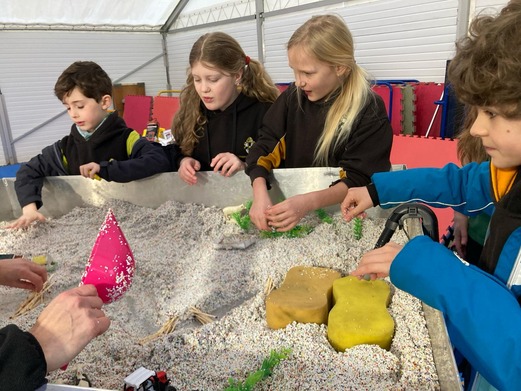 Childen from Grasmere Primary School getting involved in a river simulator. Photo credit: Grasmere Primary School.
Funded by Defra, the Cumbria innovative Flood Resilience (CiFR) project aims to improve the flood resilience of small rural communities, many of which have already suffered multiple flood events and where traditional flood defences aren’t viable.
CiFR is using targeted Natural Flood Management (NFM) to reduce flood risk and support communities to prepare for the residual flood risk. One of these at-risk communities in Cumbria and a CiFR project area is Grasmere.
As part of CiFR’s community engagement work, the children participated in a series of workshops run by colleagues from Westmorland and Furness Council, the Environment Agency, Natural England, Cumbria CVS and Cumbria Wildlife Trust. From a river simulator to learning about soils and peat, to talking about how families can prepare for flooding with a household emergency plan, there was lots for the children to get involved in and hear about.
The team have been 'flooded' with positive feedback from the session with the children reporting that they found the visit interesting, had particularly enjoyed getting involved in the river simulation and that the sessions had made them think about their local beck and what could be done to be flood prepared.
We look forward to visiting more schools in the future!
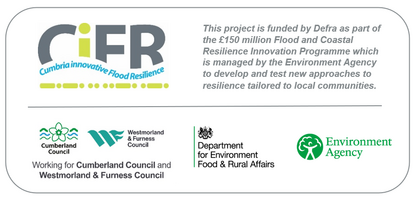 |

Anything with a plug, battery or cable can be recycled - and most of the materials in them can be made into new products.
Many of us have old electrical items we no longer use and want to get rid of, things from mobile phones to kettles, hairdryers to laptops.
Did you know that the average household has around 30 unwanted electrical items, which contain scarce and precious resources?
It can seem hard to recycle them but there are solutions: repair, donate, sell or recycle.
Repair
Old kettle in need of a new element? Phone needing a new screen? If your device has developed a fault you might be able to get the manufacturer to repair or replace it. Failing that, remember it can be cheaper to pay to have something fixed than to buy new. Usually better for the planet too.
Donate
Don't need your old device? Someone else could use it. Some charities accept electrical items for reuse or resale. See where you could donate.
Remember: if donating old laptops, mobile phones and other smart devices, they contain mountains of valuable data. So before recycling or passing them on, make them safe.
Sell
It’s never been easier to sell second-hand electronics – whether a laptop, your old headphones, hair dryer or kitchen appliances. With market places like Gumtree, Facebook Marketplace and eBay, it can be easy to find a buyer and cash in on your electricals.
Recycle
Most electrical retailers are now obliged to take back old items when you buy a new one, and may take them even if you haven’t made a purchase.
Our Household Waste Recycling Centres (HWRCs) also accept electricals for recycling.
So if you have old electrical stuff that you don’t quite know what to do with, find a convenient recycling point at recycle your electricals or see the guidance on selling used electricals. This site also gives advice on secure deletion of your data.
Image shows: a box of old used computers, digital tablets, smartphones and electronic devices.
|
How we talk about climate change can inspire and motivate people to act, or make it feel more overwhelming and confusing than it needs to be.
By understanding the issues, we can help explain to others why it's important to act on climate change, the scale of that action and how to be part of that change on an individual and community level.
To help, we'll be sharing useful links and highlighting some great resources that help explain the main issues.

The Met Office
Climate change is a complicated topic, and lots of people still have questions.
Weather and climate are not the same. So, what exactly is climate and what affects it?
The Met Office provide weather and climate forecasts to help people make decisions based on the weather so they can be safe, well and prosperous.
Their work is based on world-leading science and enhanced by the close working relationships they have with partner organisations around the globe. They collect and make sense of massive amounts of data every day, using cutting-edge technology for the benefit of mankind - and our planet.
From what is climate change, to the causes, effects and most asked questions, find out everything you need to know about our climate and how it works by visiting the Met Office website.
Image shows: the Met Office logo.
|
|